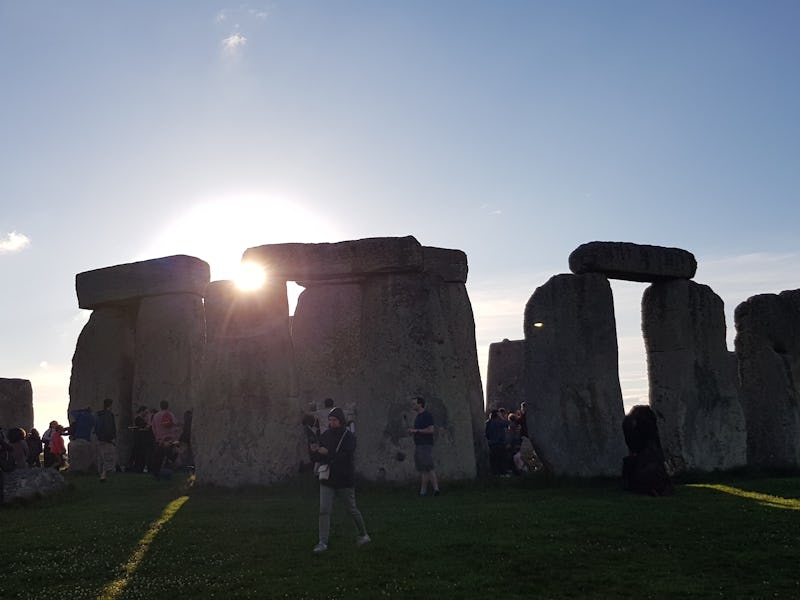Summer Solstice: 3 Historical Locations That Mark the Original Holiday
The longest day of the year is steeped in mystical tradition.

The summer solstice is here, and to mark the longest day of the year, Google gave a nod to the holiday’s mystical history with a doodle of a sprite chilling in an acorn. While the doodle is cute and all, it draws from a long legacy of mystical and religious celebration around the solstice. Here are a few ancient cultures that found deep significance in the holiday.
Ancient Egypt
Perhaps the oldest celebration of the solstice can be found in Ancient Egypt. The complex society designed their most famous and striking monuments to align with the solstice — when standing at the Sphinx on the summer solstice, the sun sets exactly between two of the Great Pyramids. Ancient Egyptians also built a temple to Osiris that is illuminated by the setting sun on the solstice shines between two nearby hills.
Egyptians celebrated the solstice because it signaled the coming of the star Sirius, and the Ancient Egyptian New Year, which was tied to the yearly flooding of the Nile. The Nile’s flooding was crucial for Ancient Egypt’s food system, so priests associated Sirius with one of their most important goddesses, Isis.
The Sphinx and the Great Pyramids are aligned in coordination with the solstice.
Stonehenge
Stonehenge, which was built throughout the second millenium BC, also aligns with the sun on the solstice. Looking through a portion of the monument while facing Northeast allows one to see the sun rise over what is known as The Heel Stone.
Much less is known about the culture that built Stonehenge, as they left no written records. But it’s alignment with both the Winter and Summer solstices and its history as a burial ground suggest that the holiday contained some sort of mystical or religious significance.
Two leading archeologists, Professor Timothy Darvill and Professor Geoff Wainwright, in the UK have suggested that due to evidence of trauma left on the bones found there, it’s possible that Stonehenge was considered a place of healing.
18th century scholar Willam Stukeley theorized that it was used for worship, writing “When you enter the building and cast your eyes around, upon the yawning ruins, you are struck into an exstatic [sic] reverie, which none can describe.”
Crowds typically gather at Stonehenge to celebrate the summer solstice.
The Mayans
Ancient Mayan’s in Guatemala are also suspected to have celebrated the solstice with an architecturally grounded gathering. Archeologist Brigitte Kovacevich told National Geographic that ruins uncovered in 2011, but built some time between 600 BC and 300 BC, were aligned for celebrations of solar events.
“During the solstices, you would’ve been able to see the sun rising in line with the eastern structure, and the common people would have thought that the king was commanding the heavens,” Kovacevich told National Geographic.
In Mexico, Mayans also constructed buildings seemingly based on the solstice. At the Temple of Kukulcan in Tulum, one side of the temple is completely illuminated in sun while the other is completely dark during the solstice. Kukulcan was the Mayan god of rejuvenation. It’s unclear why solar events were tied to the gods and so central to the Mayans, but one theory posits that they were used to mark significant times for their food cycle.
Multiple Mayan structures align with the summer solstice.